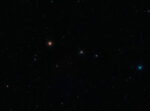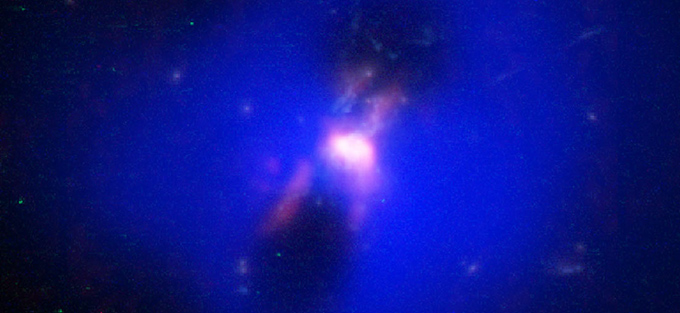Astronomers make most distant detection yet of fluorine in star-forming galaxy
A new discovery is shedding light on how fluorine — an element found in our bones and teeth as fluoride — is forged in the Universe. Using the Atacama Large Millimeter/submillimeter Array (ALMA), a team of astronomers have detected this element in a galaxy that is so far away its light has taken over 12 billion years to reach us. This is the first time fluorine has been spotted in such a distant star-forming galaxy.
“We all know about fluorine because the toothpaste we use every day contains it in the form of fluoride,” says Maximilien Franco from the University of Hertfordshire in the UK, who led the new study, published today in Nature Astronomy. Like most elements around us, fluorine is created inside stars but, until now, we did not know exactly how this element was produced. “We did not even know which type of stars produced the majority of fluorine in the Universe!”
Franco and his collaborators spotted fluorine (in the form of hydrogen fluoride) in the large clouds of gas of the distant galaxy NGP–190387, which we see as it was when the Universe was only 1.4 billion years old, about 10% of its current age. Since stars expel the elements they form in their cores as they reach the end of their lives, this detection implies that the stars that created fluorine must have lived and died quickly.
The team believes that Wolf–Rayet stars, very massive stars that live only a few million years, a blink of the eye in the Universe’s history, are the most likely production sites of fluorine. They are needed to explain the amounts of hydrogen fluoride the team spotted, they say. Wolf–Rayet stars had been suggested as possible sources of cosmic fluorine before, but astronomers did not know until now how important they were in producing this element in the early Universe.
“We have shown that Wolf–Rayet stars, which are among the most massive stars known and can explode violently as they reach the end of their lives, help us, in a way, to maintain good dental health!” jokes Franco.
Besides these stars, other scenarios for how fluorine is produced and expelled have been put forward in the past. An example includes pulsations of giant, evolved stars with masses up to few times that of our Sun, called asymptotic giant branch stars. But the team believes these scenarios, some of which take billions of years to occur, might not fully explain the amount of fluorine in NGP–190387.
“For this galaxy, it took just tens or hundreds of millions of years to have fluorine levels comparable to those found in stars in the Milky Way, which is 13.5 billion years old. This was a totally unexpected result,” says Chiaki Kobayashi, a professor at the University of Hertfordshire. “Our measurement adds a completely new constraint on the origin of fluorine, which has been studied for two decades.”
The discovery in NGP–190387 marks one of the first detections of fluorine beyond the Milky Way and its neighbouring galaxies. Astronomers have previously spotted this element in distant quasars, bright objects powered by supermassive black holes at the center of some galaxies. But never before had this element been observed in a star-forming galaxy so early in the history of the Universe.
The team’s detection of fluorine was a chance discovery made possible thanks to the use of space and ground-based observatories. NGP–190387, originally discovered with the European Space Agency’s Herschel Space Observatory and later observed with ALMA, is extraordinarily bright for its distance. The ALMA data confirmed that the exceptional luminosity of this distant galaxy was partly caused by another known massive galaxy, located between it and the Earth, very close to the line of sight. This massive galaxy amplified the light observed by Franco and his collaborators, enabling them to spot the faint radiation emitted billions of years ago by the fluorine in NGP–190387.
Future studies of of this distant galaxy with the Extremely Large Telescope (ELT) — ESO’s new flagship project, under construction in Chile and set to start operations later this decade — could reveal further secrets about this galaxy. “ALMA is sensitive to radiation emitted by cold interstellar gas and dust,” says Chentao Yang, an ESO Fellow in Chile. “With the ELT, we will be able to observe NGP–190387 through the direct light of stars, gaining crucial information on the stellar content of this galaxy.”
Additional information
The original press release was published by the European Southern Observatory, an ALMA partner on behalf of Europe.
The Atacama Large Millimeter/submillimeter Array (ALMA), an international astronomy facility, is a partnership of the European Organisation for Astronomical Research in the Southern Hemisphere (ESO), the U.S. National Science Foundation (NSF) and the National Institutes of Natural Sciences (NINS) of Japan in cooperation with the Republic of Chile. ALMA is funded by ESO on behalf of its Member States, by NSF in cooperation with the National Research Council of Canada (NRC) and the Ministry of Science and Technology (MOST) and by NINS in cooperation with the Academia Sinica (AS) in Taiwan and the Korea Astronomy and Space Science Institute (KASI).
ALMA construction and operations are led by ESO on behalf of its Member States; by the National Radio Astronomy Observatory (NRAO), managed by Associated Universities, Inc. (AUI), on behalf of North America; and by the National Astronomical Observatory of Japan (NAOJ) on behalf of East Asia. The Joint ALMA Observatory (JAO) provides the unified leadership and management of the construction, commissioning and operation of ALMA.
Images
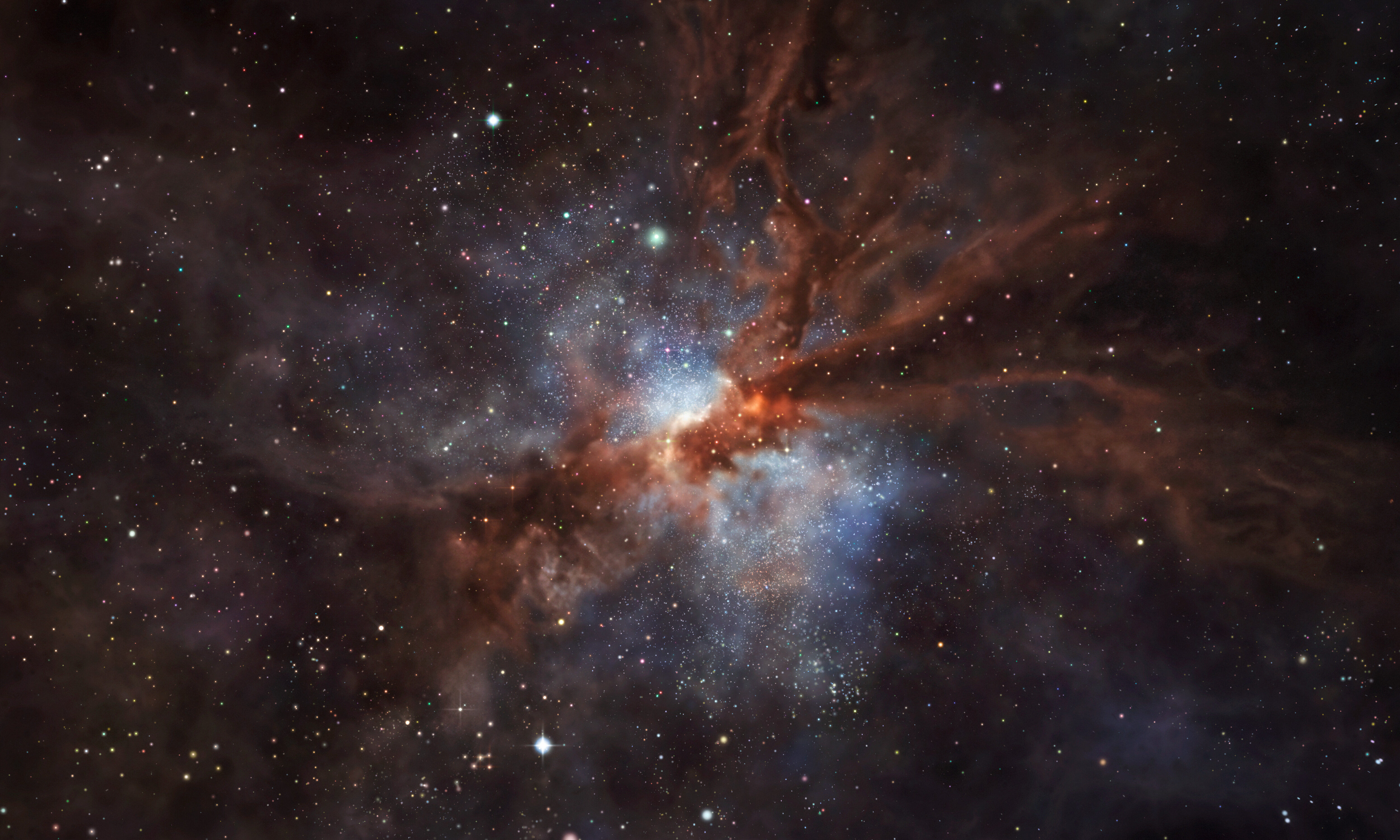
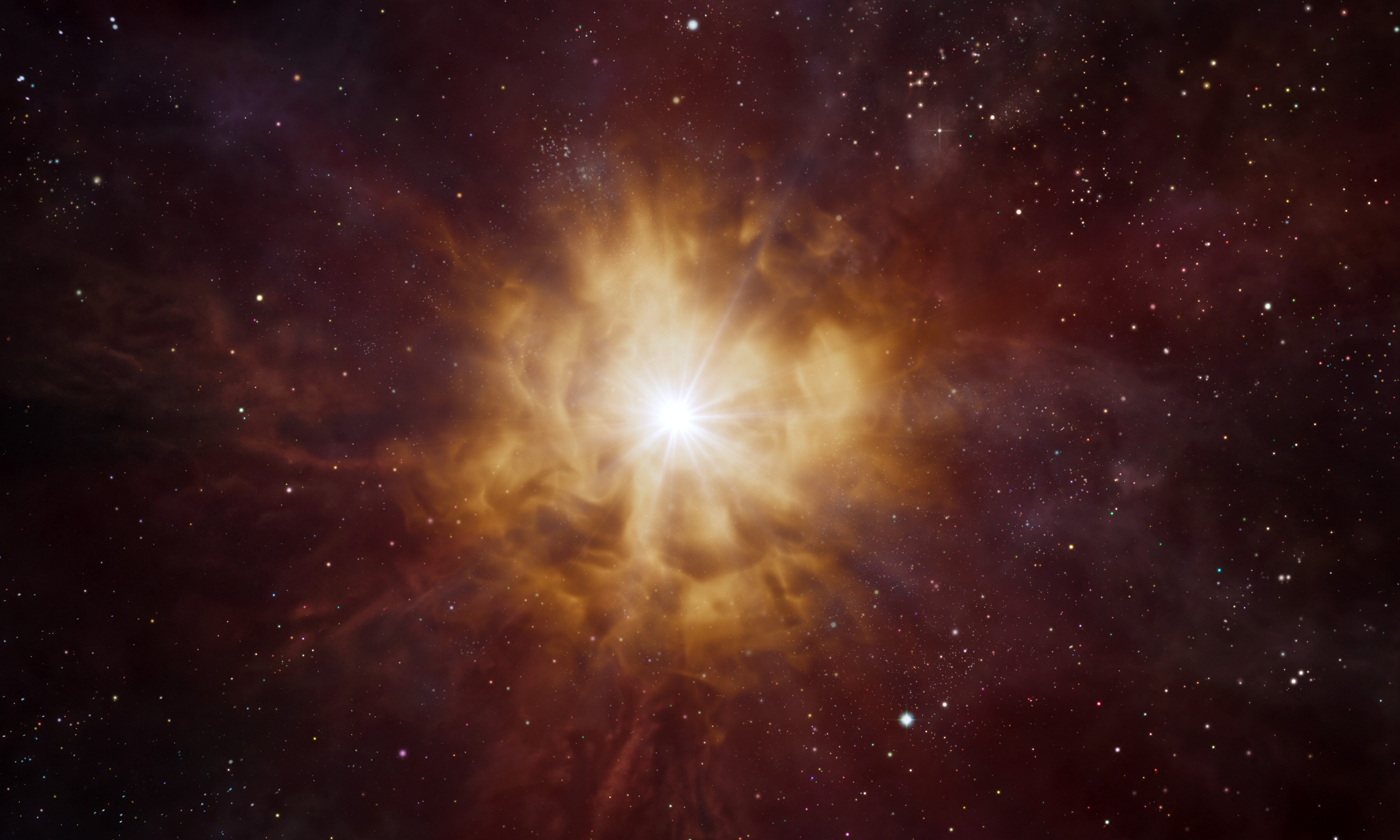
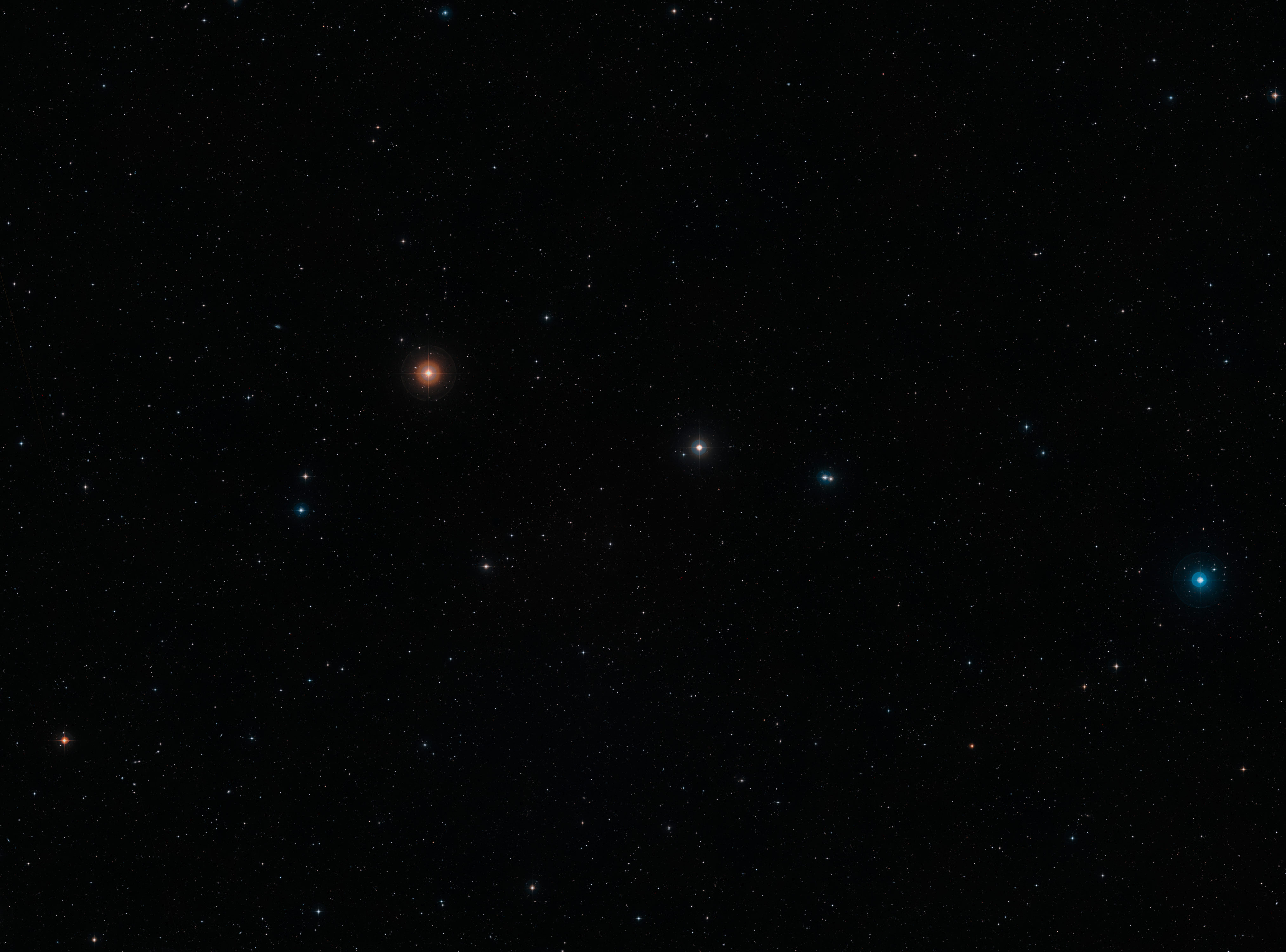
Videos
A new finding, made with the ALMA observatory, is shedding light on how fluorine is forged in the Universe. Find out more in this discovery, and how it is related to our dental hygiene, in this video summary.
Credit: ESO
Directed by: Herbert Zodet and Martin Wallner.
Editing: Herbert Zodet.
Web and technical support: Gurvan Bazin and Raquel Yumi Shida.
Written by: Giulio Mazzolo, Juliet Hannay and Bárbara Ferreira.
Music: Stellardrone — Mars.
Footage and photos: ESO, L. Calçada, M. Kornmesser, P. Horálek, Digitized Sky Survey 2 and N. Risinger (skysurvey.org).
Scientific consultants: Paola Amico and Mariya Lyubenova.
This animation takes us on a journey to one of the Wolf–Rayet stars in NGP–190387, a galaxy so far away its light took over 12 billion years to reach us. The images at the start of the video are real astronomical observations, while the galaxy and its Wolf–Rayet star (too distant to be imaged clearly) are represented by means of artists' animations.
Wolf–Rayet stars are hot and massive, with lifespans of a few million years and are thought to end in dramatic supernova explosions. Recent ALMA observations have spotted fluorine in the gas clouds of NGP–190387, making it the most distant detection of this element in a star-forming galaxy. This result suggests short-lived Wolf–Rayet stars may form most of the fluorine in galaxies.
Credit: ESO/L. Calçada/M. Kornmesser/Digitized Sky Survey 2/N. Risinger (skysurvey.org)
This artist’s animation shows NGP–190387, a star-forming, dusty galaxy that is so far away its light has taken over 12 billion years to reach us.
ALMA observations have revealed the presence of fluorine in the gas clouds of NGP–190387. To date, this is the most distant detection of the element in a star-forming galaxy, one that we see as it was only 1.4 billion years after the Big Bang — about 10% of the current age of the Universe. The discovery sheds a new light on how stars forge fluorine, suggesting short-lived stars known as Wolf–Rayet may form most of the fluorine in galaxies.
Credit: ESO/M. Kornmesser
Contacts
-
Bárbara Ferreira
ESO Media Manager -
Masaaki Hiramatsu
Education and Public Outreach Officer, NAOJ Chile -
Amy C. Oliver
Public Information & News Manager



